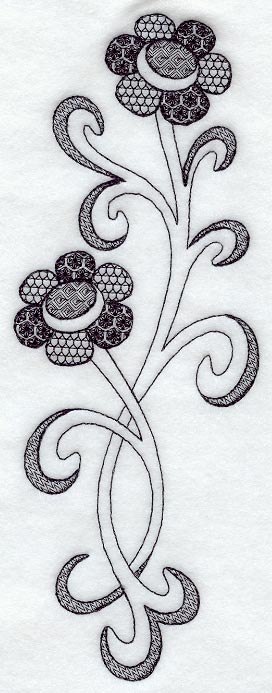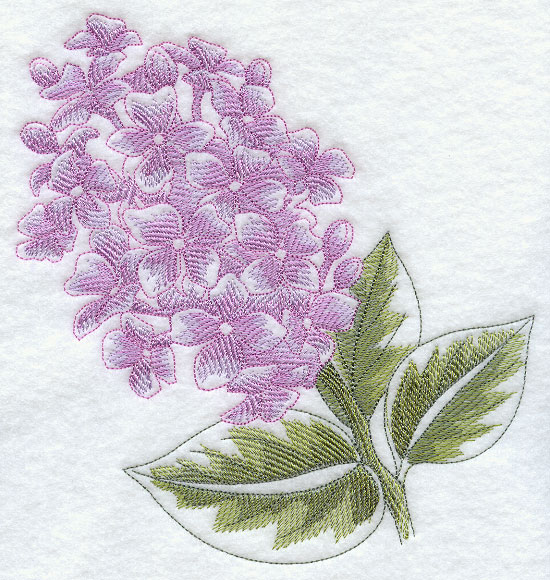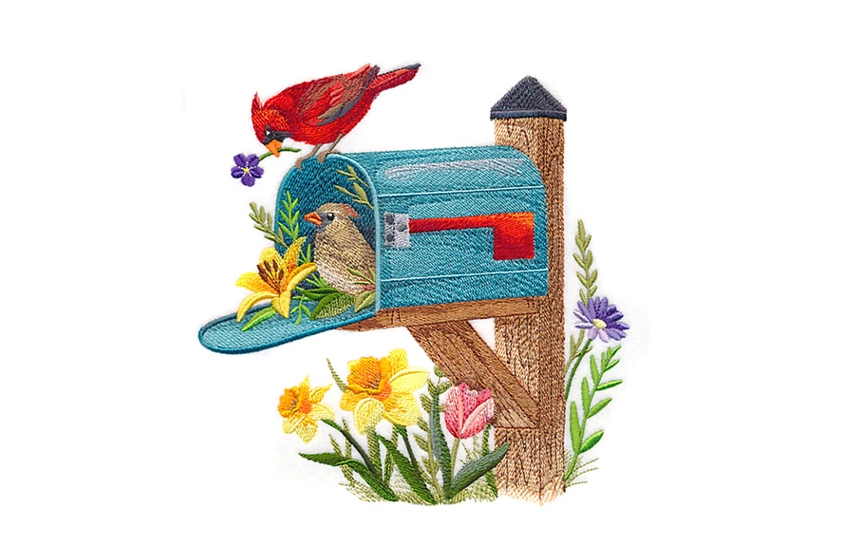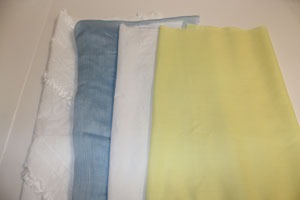
Batiste is a fabric known for being very soft and lightweight. Because of its amazing softness, it is often used for baby and children's clothes, as well as handkerchiefs, lingerie, scarves, heirloom pieces, and as lining fabric for garments.
Named for Jean Batiste, a thirteenth-century French linen weaver, batiste has been a popular fabric for centuries. Once you see how well it performs in a modern embroidery machine, you'll know why!

Batiste blends
Batiste is a woven fabric most often made from a cotton or a poly/cotton blend. I embroidered four types, or blends, for this article:
--100% cotton pintuck
--100% organic cotton
--50% cotton/50% polyester
--25% cotton/75% polyester
The higher the cotton content, the tighter the weave. More polyester means a slightly looser weave. Batiste is widely available -- I got mine from Fabrics.com.
Caring for the fabric
Pre-wash the fabric to shrink it. 100% cotton and cotton polyester blend batiste fabrics might shrink a little, or they might shrink a lot -- but they will shrink. Despite its delicate appearance, batiste is fairly durable, able to be machine washed and tumble dried on low. To be safe, wash batiste items on a gentle cycle, without bleach. For your specific fabric, follow the manufacturer's recommendations (get those recommendations from the bolt at the store before you leave).
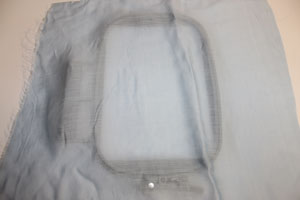
Stabilizer
No matter what blend of batiste you're using, stabilizing the fabric will support the stitches during embroidery, and ensure a crisp, professional result.
Your choice of stabilizer will depend on how sheer the fabric is. If your fabric is fairly transparent, you'll want to use a tear-away stabilizer so that it can be removed after stitching.
For less see-through fabrics, where the stabilizer won't show through, using cutaway will be the way to go. Read on to see examples I stitched out using both kinds of stabilizer.
Hooping
Because it is so lightweight, batiste is a breeze to hoop. To get a nice tight bond between the fabric and the stabilizer, I sprayed the stabilizer with a bit of temporary adhesive (I use KK100). Then I hooped the fabric and the stabilizer together.
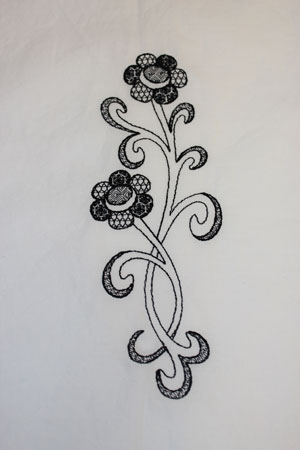
Choosing the right designs
Although batiste is a woven fabric, it's a very lightweight fabric. When choosing designs for a project with batiste, look for light and airy designs with open spaces.
Redwork, Blackwork, toile, and sketch designs are all excellent choices for stitching onto batiste, with their open areas and light stitches.
Avoid solid-stitch designs with large filled-in areas, as these designs will be too heavy. The lightweight fabric will pucker and warp under a design that is full of solid fills.
Choosing lighter designs will also allow the fabric to drape nicely, an important consideration if you're making curtains or garments.
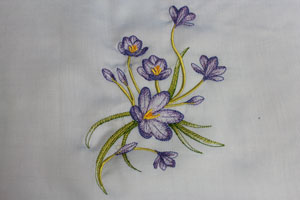
The Colorful Crocuses 1 is a good example of a light and open design that works well on a higher-polyester blend (and more see-through) batiste. For this 25% cotton/75% polyester blend, I stitched the design on tear-away stabilizer so that the stabilizer would not show through the sheer fabric, and it looks terrific.
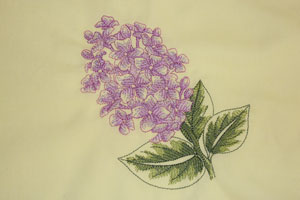
I embroidered a slightly more complex Lilac Beauty design onto a less transparent 50% cotton/50% polyester blend fabric.
I used a medium-weight cutaway stabilizer, as the stabilizer wouldn't show through the slightly denser cotton blend.
I recommend using cutaway stabilizer with batiste whenever possible, as it provides the embroidery stitches with the best possible, longest-lasting support.
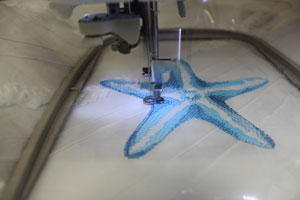
Stitching on pintuck
Pintuck batiste is lovely, with raised ridges and ruffle patterns. Embroidering on it is a breeze with a water soluble topping (I prefer Sulky Solvy or Sulky Super Solvy).
The topping helps the stitches form smoothly over the ruffles and ridges of the pintuck pattern.
When the embroidery is finished, gently tear away the topping. If any small bits remain you can use a tweezers to remove them. Or, wet your finger tips with water and brush the bits away.
